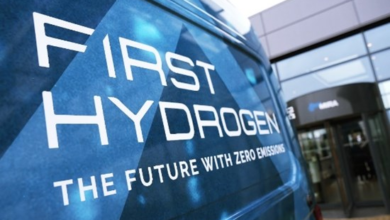Kaptur, DOE announce $1.25 Million for University Of Toledo to advance clean hydrogen technologies

Congresswoman Marcy Kaptur (OH-09) and The U.S. Department of Energy (DOE) announced $42 million in funding for 22 projects in 14 states, including $1.25 million for the University of Toledo, to advance critical technologies for producing, storing, and deploying clean hydrogen.
By advancing the performance and cost of clean-hydrogen technologies while supporting grid resilience and decarbonization, DOE continues to make strides toward achieving President Biden’s Investing in America agenda — to reach a 100% clean electrical grid by 2035 and net-zero carbon emissions by 2050. The University of Toledo will receive a total award of $1.25 Million for the development and implementation of All-Perovskite Tandem Photoelectrodes for low-cost solar hydrogen fuel production from water splitting. This durability-focused project aims to increase the stability of perovskites and protective coatings for PEC cells towards improved overall durability.
“This award will further the development of advanced solar water splitting technology to scale up production of renewable hydrogen fuel,” said Marcy Kaptur. “I am proud to see the University of Toledo continue the Glass City’s tradition of industry-leading cutting-edge solar technology innovation. Bringing these advanced materials to market will foster greater growth of domestic supply chains for next-generation energy production and will provide good paying jobs for future generations of American workers to come, in northwest Ohio and across our nation.”
“Today’s investments are a bold step in addressing some of our hardest to decarbonize sectors — heavy transportation and industry — by working directly with states and tribes to make hydrogen an available clean energy source,” said Jennifer M. Granholm. “Thanks to President Biden’s Investing in America agenda, these bold investments are ensuring the U.S. leads the way in hydrogen technology and other clean energy solutions.”
Clean hydrogen — which is produced with zero or next-to-zero carbon emissions — can leverage all our nation’s clean energy resources, including renewables, nuclear, and fossil resources with carbon capture. Clean hydrogen can also support the expansion of clean electricity by providing a means for long-duration energy storage and offering flexibility and multiple revenue streams to all types of clean power generation — including renewables, today’s nuclear fleet, advanced nuclear, and other innovative technologies.
By enabling the development of diverse, domestic clean energy pathways across multiple sectors of the economy, hydrogen development will strengthen American energy independence and accelerate the American manufacturing boom.
The 22 projects announced today will develop technologies for solar fuels, created by harvesting sunlight. In addition, they will demonstrate higher-density and lower-pressure hydrogen storage technologies, lower the costs of hydrogen fuel cells for medium- and heavy-duty transportation applications, and improve hydrogen emissions detection and monitoring — addressing potential global warming impacts.
Projects selected to improve hydrogen emissions detection will supplement DOE’s well-established and extensive work on hydrogen leakage addressing community concerns about hydrogen emissions and safety, and they will advance the broader field of leakage detection and monitoring technologies.
The projects will be managed by DOE’s Hydrogen and Fuel Cell Technologies Office (HFTO) and will also advance DOE’s Hydrogen Shot goal of reducing the cost of clean hydrogen to 1 dollar per 1 kilogram in 1 decade (“1-1-1”). They will support DOE’s H2@Scale initiative, which aims to augment the affordable production, transport, storage, and utilization of clean hydrogen.
HFTO, the DOE National Clean Hydrogen Strategy and Roadmap, and how the DOE Hydrogen Program is working to support DOE’s mission to address the climate crisis and deliver a clean and equitable energy future for all.
